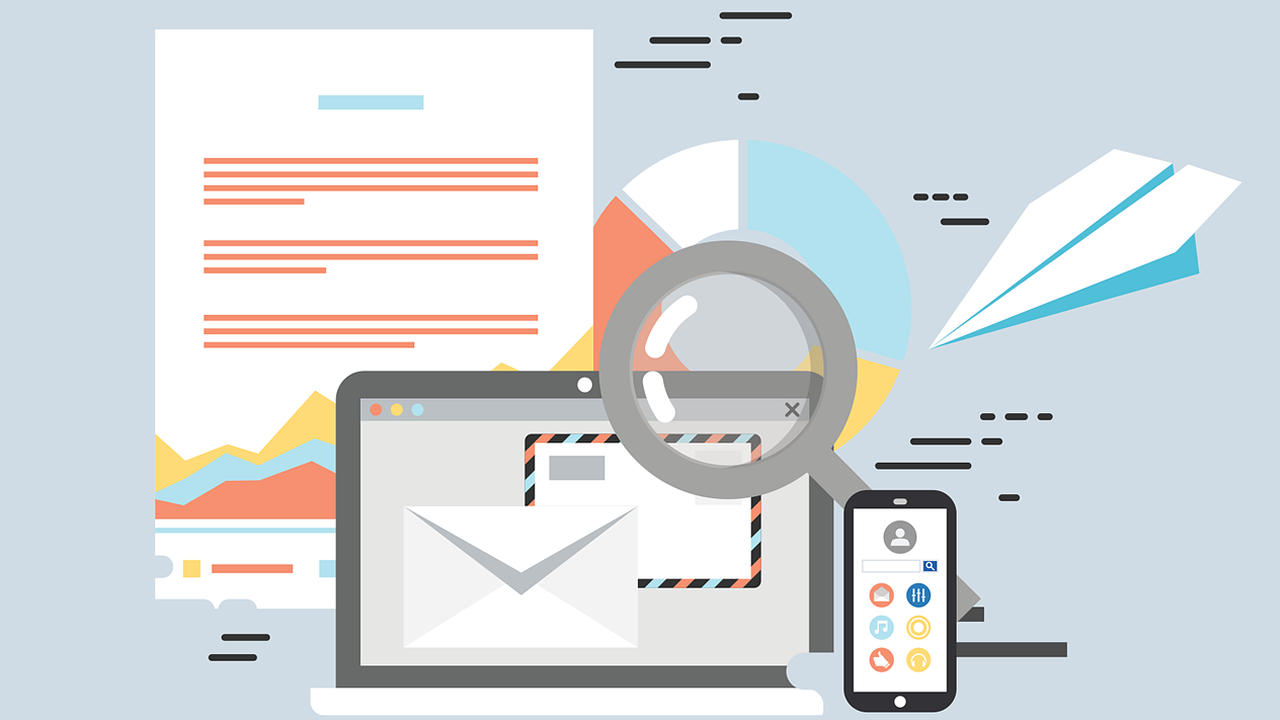How to Leverage Digital Marketing as a Small Business

Whether you’re selling products online or offering a service, digital marketing can’t be overlooked.
People spend more and more time online these days, and they’re increasingly relying on the internet to find places to eat, shop, and access services. They’re Googling for best restaurants near them and where to buy indoor plants. This means that if you don’t have an online presence, you could be missing out on sales and revenue.
Even as a small business, there are digital marketing strategies you can execute to boost your brand and meet your target audience on the internet. Here’s how you and your business can get started.
Why Digital Marketing Matters for Small Businesses
There are about 5.16 billion internet users across the world – that’s over half the global population. And 92% of those internet users are on a social media platform. The internet is a core pillar of modern society, connecting people to information, products, and services they couldn’t have accessed otherwise.
Some small business owners may think they don’t need to enter the digital sphere, especially if they have an established local customer base. But as the COVID pandemic has shown, circumstances can pivot very quickly, making an online presence a necessity. And beyond once-in-a-lifetime events, there are many advantages to establishing your brand in a digital space.
Primarily, it gives you more channels to meet your customers where they are. You can announce promotions and events, or advertise new products or services. You can also access audience feedback and see what they’re saying about your brand online. And of course, you can raise brand awareness and reach new customers who may otherwise not have heard of your business.
Social media, for example, gives you insights into your target audience that you wouldn’t get offline. A poor experience can spread like wildfire on social media, and can cause customer churn and reputation damage. On the other hand, if a positive review goes viral, engaging with the post can boost your brand image and lead to more business.
Getting Started with Digital Marketing
Before you start developing your digital marketing strategies, you’ll need to build a good foundation. That involves developing customer personas and value propositions, but it’s more than that. Beyond the demographics and data, ask yourself as a business owner:
- Who do you want to access your products or services?
- What are your customers’ pain points?
- How does your business solve that for them?
- What do you want to achieve from marketing?
- What makes your business unique?
- What value do you provide to your customers and their lives?
- How much time and what resources can you set aside?
Asking and answering these questions will help when choosing and developing your online marketing strategies. By focusing on the honest benefits that your business can provide, and realizing the limitations of your resources, you can create optimal strategies best suited to your business.
Digital Marketing Strategies to Use for Small Businesses
Whether you’re still starting out or you’ve established your brand in your local community, here are several digital marketing strategies for a small business.
#1 — Social media
Over 4 billion people around the world use social media, so it’s a highly effective marketing channel. But the approach for small businesses is different from large companies with much larger budgets. The advantage of a small business is your ability to put a face to the brand, so you can take a more personal approach.
When it comes to creating social media content, you can use free tools like Canva and Pixlr. However, it’s also essential to focus on content you can create by yourselves using a mobile phone. Then it’s all about adding your branding and personality to the content – something that makes you relatable to your market niche.
It’s also essential to engage with your audience on social media platforms. Some ways you can create organic interactions include:
- Resharing user-generated content such as reviews and product photos
- Replying to customer comments and posts
- Sharing polls or asking questions that your customers can engage with
- Engaging with brands in the same or related industries
- Hopping on trends and memes
The idea is to give your customers a look and feel of your products or services, and of your brand itself. People love supporting small businesses, so if you’re genuine with your posts, they’ll come to you!
#2 — Email marketing campaigns
It may feel more old-school compared to social media, but email marketing is a tried-and-tested strategy for reaching customers. All the more for small businesses – 64% of them use emails to reach customers. Some ways to use email marketing as a small business include:
- Building email lists for product launches
- Post-sales follow-ups and customer service
- Upselling and cross-selling for eCommerce
- Retargeting for products of interest
- Nurturing customers pre-purchase
Some best practices for email marketing campaigns are:
- Subscriber segmentation: Segmentation involves dividing customers into groups based on common characteristics. For subscribers, that means grouping them based on factors like age, gender, or even products/services of interest.
- Message personalization: People are more responsive to brand messages that appear personal. It makes them feel more valued and connected to a business, instead of just a statistic or an anonymous face. For a small business, when your customers feel like you’re engaging with them as an individual, you can inspire fierce loyalty.
- Mobile-friendliness: 49% of marketing emails are opened on a mobile device, as people access digital spaces on their phones more often. If your email doesn’t adapt to a mobile device – overlarge visuals or too-small text, for example – then people will either delete it or unsubscribe entirely.
#3 — SEO content
Search engine optimization (SEO) is the process of generating traffic through free, organic, or editorial search results. In terms of SEO content, that means creating things such as:
- Informational blog posts
- Tutorials and guides
- Landing pages
- Website security and legitimacy
Creating SEO content and optimizing your website may feel difficult, but it will pay off. Good SEO helps build credibility for your business, and is achievable even on a budget. It’s an effective way of putting your site on search engines so long as you use the right keywords relevant to your customer base. Moreover, it can support your other digital marketing strategies.
#4 — Local listings
This is also an SEO technique – one that helps customers find you quickly and easily when they’re in your area. Think about the people who search “best Mexican restaurant near me.” Having an online local listing allows you to show up in targeted searches within a specific area, which is extremely helpful for small businesses.
There are several ways to get yourself listed locally. Google Business Profile (GBP, formerly Google My Business) gets your business profile listed on Google – including your location. Adding location information to social media profiles such as Instagram and Facebook also means you come up in search results for that specific area.
It’s essential that you keep your business profile up to date, including business hours, phone numbers, and reservation links. Other information you can add to your profile includes:
- Photos of the restaurant interior and exterior
- Social media links
- Website links
- Customer reviews and ratings
#5 — Online reputation management
One bad review can easily go viral and cause almost-irreparable damage. With most people now searching online for reviews and feedback on businesses before making purchases, online reputation management (ORM) is essential.
ORM involves tactics like:
- Responding to online reviews on sites like Yelp and TripAdvisor
- Replying to Google Reviews
- Addressing public customer concerns and complaints
- Engaging with comments on your social media posts
All these strategies allow customers an insight into your brand’s “personality” – especially the way your business responds to critiques and negative feedback. Featuring and responding to reviews and other feedback also helps you build credibility as a business without a large budget.
#6 — Referral and affiliate
People tend to trust products and services that come recommended by friends and family. The personal connection in the relationship lends credibility and integrity to the recommendation – it worked for their friend, so surely it’ll work for them too. Take advantage of word of mouth by introducing referral and affiliate programs.
You can give people a personal code that first-time customers can use, which will give the referring person a reward. Alternatively, try introducing an affiliate program, where people receive a code for a discount. When someone uses their code, they earn a commission – whether in in-store credits or monetary payment.
#7 — Loyalty programs
Brands of all sizes introduce loyalty programs to reward repeat customers. While these are frequently physical or tangible items such as stamp cards, you can also introduce digital rewards programs! For example, if your business has an app, you can build it in as a feature. Meanwhile, if you run an eCommerce store, customers can accumulate reward points for purchases worth a certain amount.
You can also link your physical reward card to your digital presence. For example, gaining 10 stamps could earn a customer a code that they can use on your website. You’ll need to nurture your repeat customers since it’s more cost-effective to retain them than find new ones.
Market Small, Aim Big
No matter what strategy you use, the most important factor of marketing is to meet your customers where they are. There are businesses of all sizes for them to choose from, so you need to be the one to put yourself out there and get their attention. Even if you’re marketing to a smaller audience with a smaller budget, try to aim for big – but doable – goals. Then you’ll get your business to grow!
Interested in more marketing insights? Subscribe to our Kika newsletter for tips sent straight to your inbox.





